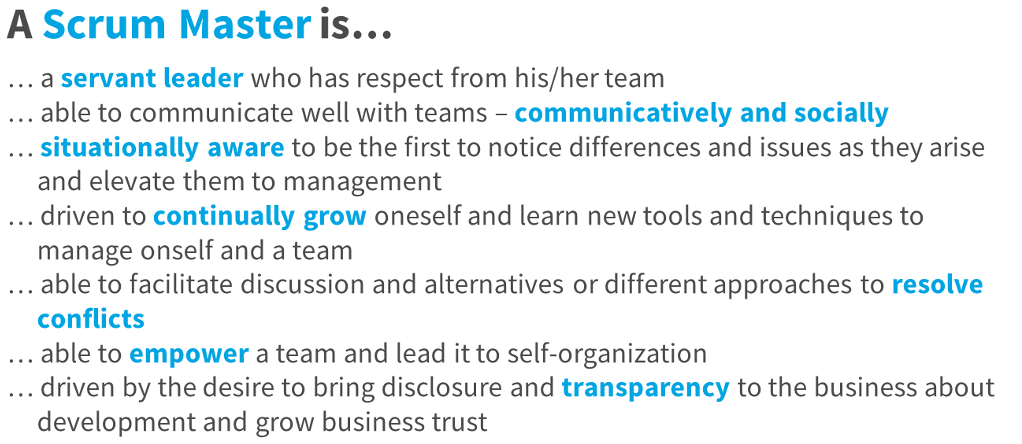
What does a Scrum Master do all day?
Scrum Masters… What do you need them for? Those guys don’t help to develop the product, they are redundant! Worst case, the Product Owner can do his job! That is what many people think when they learn about the Scrum Master role. The quick answer to that question is simple: The Scrum Master is the guardian of the Scrum process, he keeps everything together. But what does that really mean? That’s what we will find out in this post.
General
As guardian of the Scrum process, it is not the Scrum Master’s task to enforce Scrum best practices on the team; it is to maintain and improve the acceptance for Scrum within the team and the whole organization through facilitating the team, sharing knowledge and improving processes. By doing so, the Scrum Master ensures that the software development runs smoothly and efficient.
Facilitate the Team

The tricky part is to find out about impediments, because many of them are not obvious and many fall into the category “We always did it this way!”. The Scrum Master has to find them through observation, listening and asking questions; in- and outside the team.
Share Knowledge

When an organization is new to Scrum, the task of sharing knowledge is the most important one and it takes up most of the Scrum Master’s time. Once everyone within the organization is on board and has a good basic understanding, sharing knowledge takes up less time from the Scrum Master, because people learn the methodology from each other.
Improve Processes

Scrum does only come with a small number of rules, like generally working in sprints and the 3 roles, 3 artifacts and 3 meetings. Most things you hear about are best practices or recommendations which might be applicable for you, or not. To make the day-to-day work as suitable as possible you can for example adjust these things:
- Sprint length: Generally 4 to 6 weeks are recommended, if many people complain that sprints are too short, make them longer.
- Length of events: The same applies for the duration of events. Depending on the sprint length a certain timebox is recommended. A mostly unexperienced team might need longer in the beginning.
- Estimation policy: There are many different opinions on what and how to estimate. Planning poker is often the first thing you hear about, but if your team wants to try something new, let them. There are many alternatives to it.
- Involvement of stakeholders: Scrum generally promotes an open-door-policy, but especially if an organization is new to Scrum you should actively invite people to increase the acceptance.
Requirements on Scrum Masters
In addition to extensive knowledge about Scrum and agile methodologies in general and basic knowledge about software development, a Scrum Master needs certain personal skills to fulfill his tasks.
Conclusion
The Scrum Master is essential for a successful Scrum team, even though they don’t develop the product. Especially teams and organizations that are new to Scrum need them, because the Scrum Master is someone who teaches others about Scrum and facilitates a self-organizing team.
Being a Scrum Master is not for everyone, so choose wisely when you pick one. It is important that a Scrum Master is curious and wants to continuously improve things. On top of that it is important that the Scrum Master has a certain level of social awareness, so that they have a nose for social tensions.
With kind regards, Cloudogu





